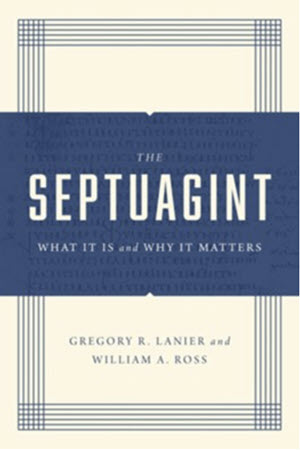
Why do we recommend this book?
The Septuagint: What It Is and Why It Matters is one of the best introductions to the Septuagint I have seen. In 216 pages, readers are introduced to the Septuagint in a very accessible way. But in addition, the authors also convincingly demonstrate the current relevance of the Septuagint to the contemporary study of the Bible. The introduction is clear enough to serve as a first introduction to the Septuagint, while the 255 footnotes throughout the book provide ample material for further study for those who want it.
The book contains two main sections, which the title suggests: 1) What is the Septuagint? and 2) Why does the Septuagint matter? The first section consists of four chapters devoted to describing the Septuagint from different perspectives:
- the first two chapters deal with the origins of the Septuagint and how people came to speak of the "Septuagint," while also explaining that there is actually no such thing as the Septuagint;
- the third chapter provides an overview of the characteristics of the Greek Old Testament by discussing the underlying translation philosophy and methods, as well as the style and register;
- the fourth chapter describes how the Septuagint developed through revisions and reviews.
Many readers will find the second part the most interesting part of the book: why does the Septuagint matter? Does the Septuagint still have any meaning for today? And only for scholars or also for pastors and laymen? Therefore, in this part, the authors discuss three topics:
- Chapter five discusses the relevance of the Septuagint for Old Testament study. One aspect is the fact that the Septuagint contains more texts than the Hebrew Old Testament, while from another perspective the Septuagint can be seen as an early interpretation of the Hebrew Old Testament;
- chapter six addresses the same issue for the New Testament. The Septuagint has undeniably influenced the New Testament in many ways. But does this mean that we should view the Septuagint as "the Bible" of the New Testament writers and the early church?
- chapter seven finally answers the question of what kind of authority the Septuagint has. To this end, the authors make a useful distinction between 1) normative authority, 2) derived authority, and 3) interpretive authority.
The book is peppered with interesting examples that show the relevance of the study of the Septuagint for today. For laymen, I find especially interesting the Appendix containing "Ten Key Questions about the Septuagint," which serves as a concise summary (8 pages) of the most important aspects of the Septuagint and its study. This section also provides a small bibliography (13 titles) of recommended sources for further research on the topics discussed in the book.
The only aspect I find missing from this introduction is a discussion of how the source text of the Septuagint relates to the Masoretic Text of the Hebrew Old Testament. Particularly in comparison to what we find in the Dead Sea Scrolls. Did the Septuagint translators have access to a much older Hebrew text than the MT? This question has a major impact on how people judge the authority of the Septuagint. Nevertheless, with this book we have a wonderful introduction to the Septuagint.
